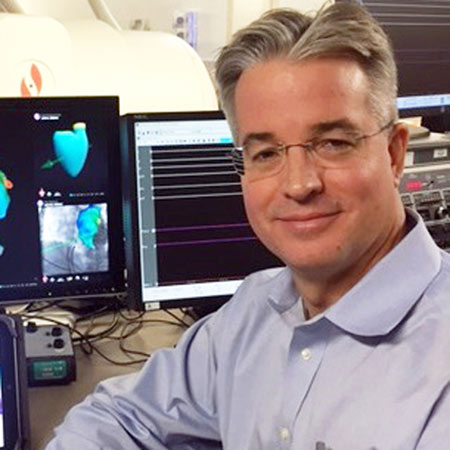
Dr. Burr Hall
University of Rochester Medical Center
I would really like to see the perception change in the EP community around Stereotaxis as it can offer safety and efficacy advantages, especially in VT/PVC patients.
Anything worth knowing is worth learning. Once through the initial learning curve of transitioning from performing ablation cases with his hands to remotely with the Stereotaxis system, Dr. Burr Hall of the University of Rochester Medical Center in New York learned he had the ability to do things with robotic ablation that he never could with his hands. “The Stereotaxis system has really changed the theory of movement in ablation, enabling me to reach places and make catheter movements I could not do before in a safe and stable manner,” says Dr. Hall.
Primarily using the system for AF at the beginning, Dr. Hall has since become convinced of its superiority in endocardial scar related VT and PVCs, having both acute and long-term success with patients for whom manual ablation attempts have failed. “I would really like to see the perception change in the EP community around Stereotaxis as it can offer safety and efficacy advantages, especially in VT/PVC patients,” he says.
Thank you Dr. Hall for your willingness to learn new technologies and help drive innovation in EP!

